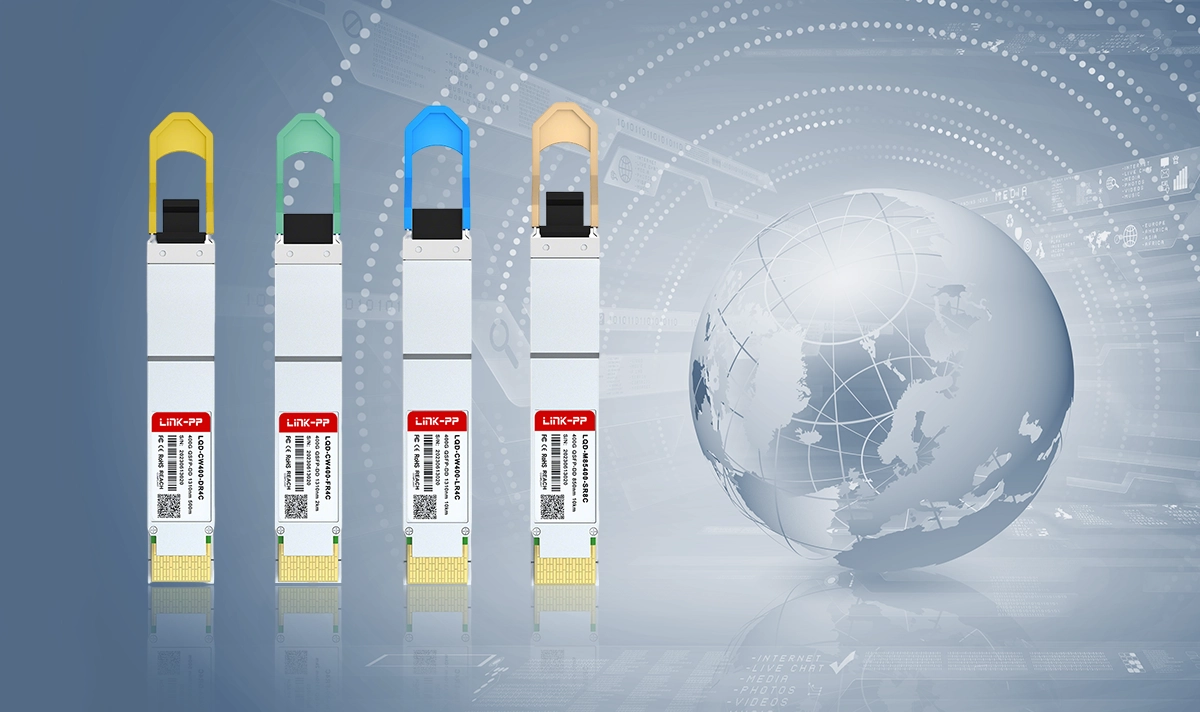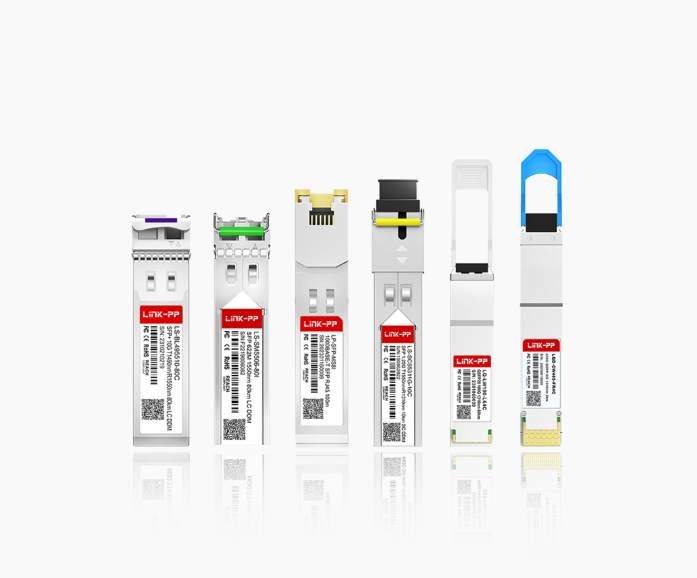
In the high-stakes world of data transmission, where every nanosecond counts, optical transceivers are the unsung heroes. These compact powerhouses convert electrical signals into light and back again, forming the backbone of modern data centers, 5G networks, and global internet infrastructure. But what truly determines their speed, efficiency, and reach? The answer lies not just in the design, but deep within the atomic structure of the semiconductor materials at their core.
Understanding the impact of semiconductor material properties on optical modules is crucial for anyone specifying, purchasing, or designing these critical components. This isn't just academic; it's the difference between a sluggish network and a high-performance, future-proofed one.
📑 The Fundamental Properties That Matter
At the heart of every optical transceiver are semiconductor chips: the laser that emits the light and the photodetector that receives it. The choice of material for these chips—primarily Indium Phosphide (InP), Gallium Arsenide (GaAs), and Silicon (Si)—is a complex trade-off governed by a few key physical properties.
Bandgap (Eg): The Color Controller
The bandgap is the energy required for an electron to jump from a non-conductive state to a conductive one. This property directly determines the wavelength of the light the semiconductor can emit or absorb.Wider Bandgap (e.g., GaN): Emits shorter wavelengths (blue, violet). Used in specialized applications but less common in core data communication.
Narrower Bandgap (e.g., InP, GaAs): Emits longer wavelengths (infrared, around 1310nm & 1550nm). These are the workhorse wavelengths for fiber optics due to lower signal loss in glass fiber.
Electron Mobility (μ): The Speed Limit
This measures how quickly electrons can move through the semiconductor. High electron mobility is paramount for high-speed optical modules operating at 400G, 800G, and beyond. It directly translates to faster modulation rates and lower signal distortion.Thermal Conductivity & Thermal Expansion: The Stability Guardian
Lasers generate heat. A material with good thermal conductivity dissipates this heat efficiently, preventing performance degradation and extending lifespan. The coefficient of thermal expansion must also be compatible with other materials in the package to avoid mechanical stress and failure over time.
The following table provides a clear comparison of the primary semiconductor materials used in optical modules:
Material | Common Applications | Key Advantages | Key Limitations | Ideal Wavelength Range |
|---|---|---|---|---|
Indium Phosphide (InP) | High-performance Lasers & Photodetectors | High electron mobility, direct bandgap, efficient light emission | High cost, fragile | 1310nm, 1550nm (Long-Haul) |
Gallium Arsenide (GaAs) | VCSELs for Short-Reach | Cost-effective for mass production, good performance | Lower efficiency for long-haul | 850nm (Short-Reach) |
Silicon (Si) | Photonic Integrated Circuits (PICs) | Low cost, leverages existing CMOS tech, high integration | Indirect bandgap (poor light emitter) | Modulators, Waveguides |
📑 From Material Science to Real-World Optical Modules
How do these abstract properties translate into the specifications on a datasheet? Let's break it down.
Data Rate & Bandwidth: To achieve higher data rates (e.g., moving from 100G to 400G), you need to modulate the laser faster. This is where high electron mobility materials like InP shine, allowing for clean, high-speed signal transitions. For engineers looking for reliable high-speed data center connectivity, the underlying material choice is a primary factor.
Transmission Distance: The bandgap-engineered wavelength is critical. For long-haul transmission, 1550nm lasers (typically made from InP) are essential because this wavelength experiences the absolute minimum attenuation in silica fibers. A GaAs-based 850nm laser simply couldn't make the journey.
Power Consumption & Thermal Management: As data centers face increasing pressure to reduce their Power Usage Effectiveness (PUE), the efficiency of optical modules becomes a top priority. Materials with higher luminous efficiency and better thermal conductivity require less power to achieve the same output and are easier to keep cool, directly lowering operational costs.
Reliability & Lifespan: A module's mean time between failures (MTBF) is heavily influenced by thermal stress. Materials with mismatched thermal expansion coefficients can lead to delamination and failure over time. Choosing a module built with stable, well-matched semiconductor materials is a non-negotiable aspect of network reliability.
📑 Spotlight: The LINK-PP 400G ZR+ Coherent Module
Let's put theory into practice with a concrete example. Consider the LINK-PP 400G ZR+ coherent optical module. This module is designed for high-performance data center interconnects (DCI) and metro network applications.
What makes it so capable? The answer lies in its sophisticated core: it utilizes Indium Phosphide (InP)-based semiconductor components for both its transmitter and receiver.
Why InP? The 400G ZR+ standard requires transmitting a high-bandwidth signal over distances exceeding 80km. This demands:
High-Power, Stable Lasers: The InP laser can efficiently produce the precise 1550nm wavelength with the power and stability needed for long-haul travel.
Complex Modulation: Coherent technology uses complex modulation formats (like DP-16QAM). The high electron mobility of InP allows for the ultra-fast electrical signals required to encode this massive amount of data onto the lightwave.
Sensitivity: The InP-based coherent receiver is exquisitely sensitive, capable of detecting and decoding the faint, distorted signal after its long journey through the fiber.
By leveraging the superior properties of Indium Phosphide, LINK-PP ensures that the coherent transceiver delivers on its promise of high-density, long-reach, and power-efficient 400G connectivity, making it a cornerstone for next-generation network upgrades.

📑 Choosing the Right Module: A Guide Informed by Materials
When you're evaluating optical modules for high-speed data centers or long-haul network infrastructure, the semiconductor material is a hidden but critical spec. Asking the right questions can save you from future headaches:
For short-reach links inside a data center (e.g., <100m), cost-effective GaAs-based VCSEL modules are often perfect.
For medium to long-range applications (e.g., DCI, metro), you need the performance of InP-based lasers, much like the technology found in the LINK-PP 400G ZR+ Coherent Module.
Ultimately, partnering with a manufacturer that deeply understands this material science is key. It’s this expertise that allows them to engineer modules that are not just fast, but also reliable, efficient, and tailored for specific use cases.
📑 FAQ
What is the most important property of a semiconductor for optical modules?
You should pay attention to the bandgap. The bandgap tells you what kind of light your module can use. It also changes how fast and efficient your device is. The bandgap helps decide what type of light your device can handle.
Why do defects in semiconductor materials matter?
Defects can make electrons and holes move slower. They can also change how your module works. If there are too many defects, your module will not work as well. It will also not be as reliable.
Can you use silicon for all optical modules?
You cannot use silicon for every optical module. Silicon is good for modulators and some detectors. But for lasers and fast detectors, you need III-V compounds like GaAs or InP.
How do you pick the right semiconductor material?
Check the bandgap for the wavelength you need.
Look for high carrier mobility in the material.
Make sure the material moves heat away well.
Pick materials that do not have many defects.
What are some new materials for future optical modules?
Material | Benefit |
|---|---|
Graphene | Faster speeds |
2D materials | Smaller modules |
Silicon photonics | Better integration |
These new materials can help make modules faster and more reliable.




